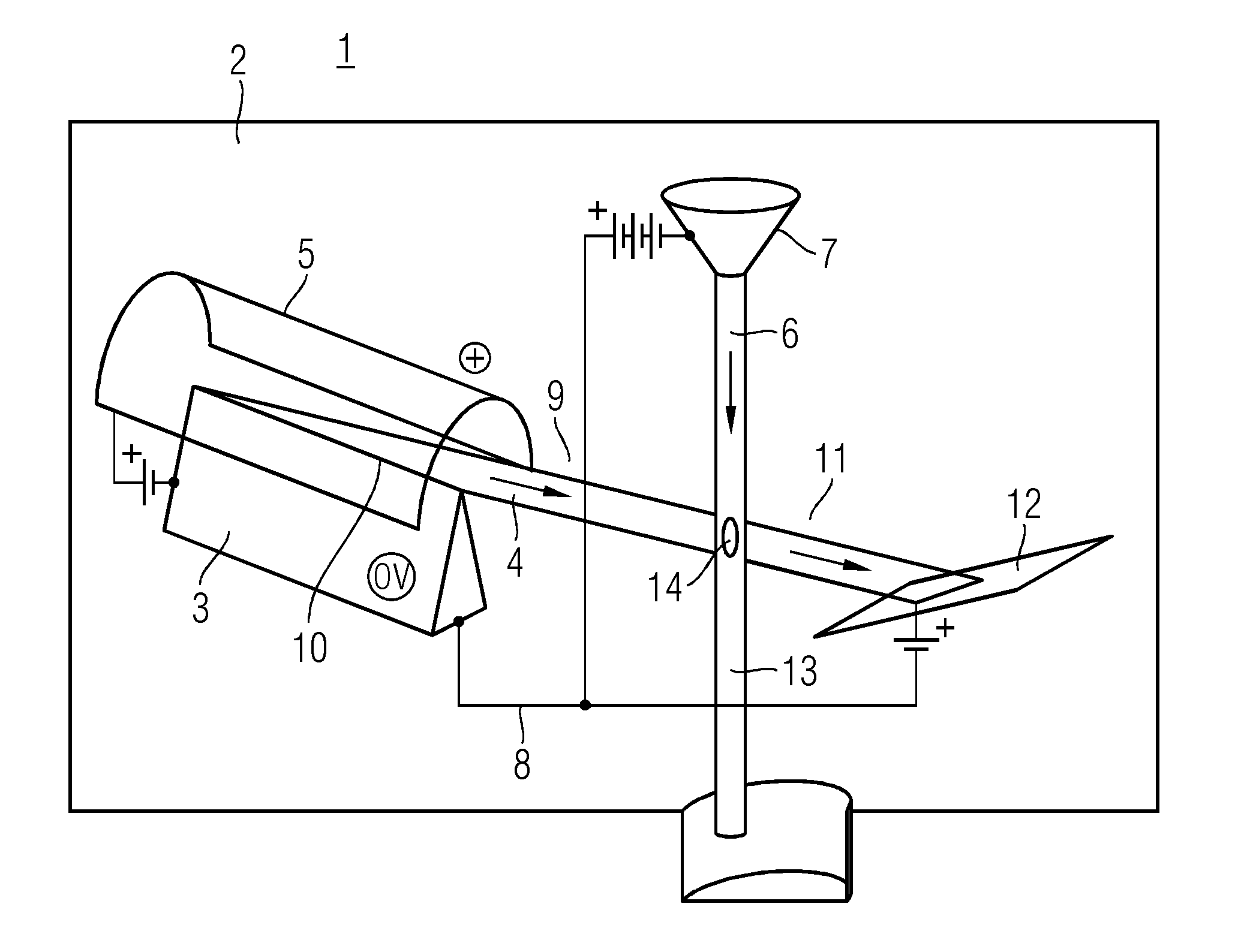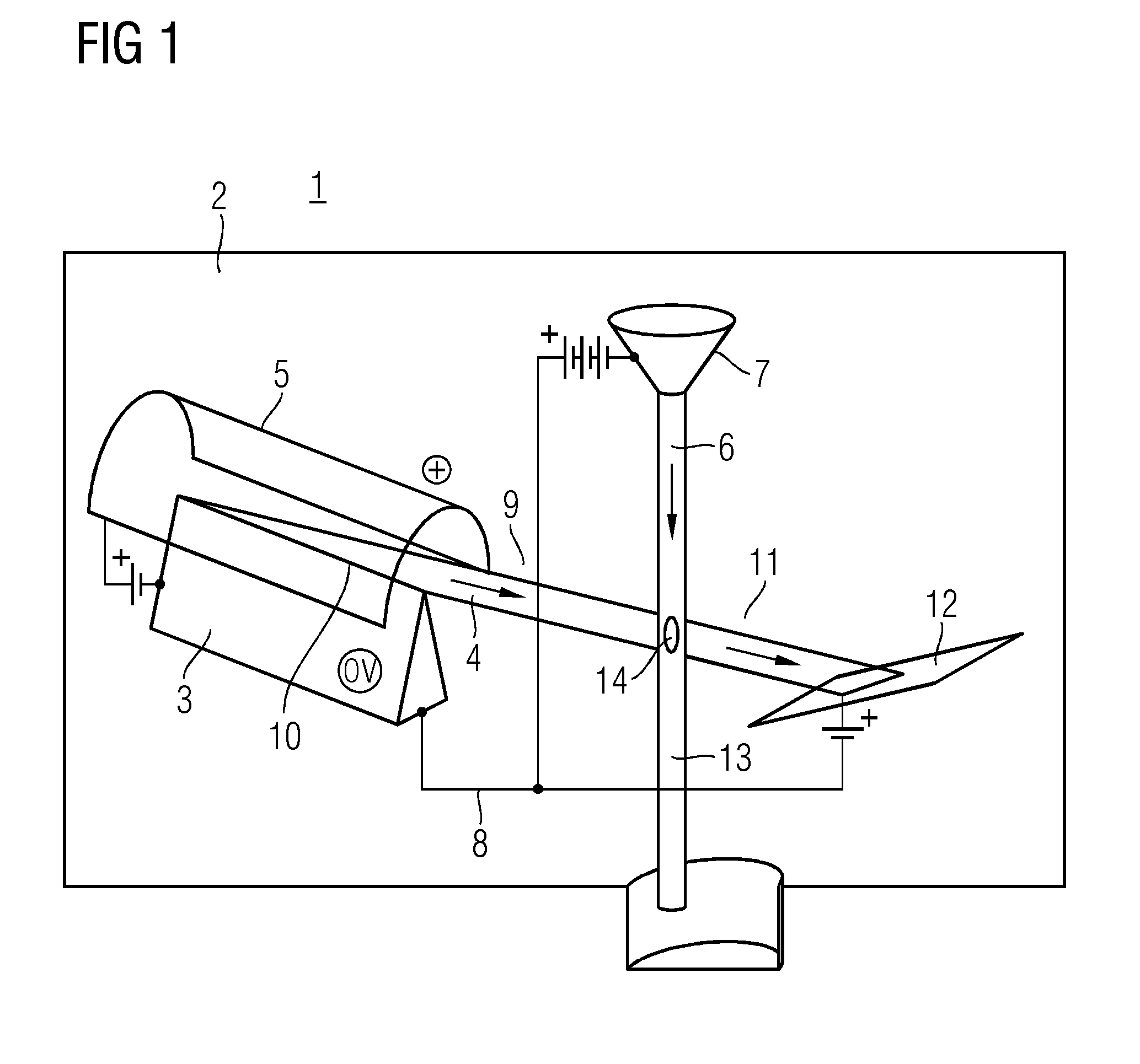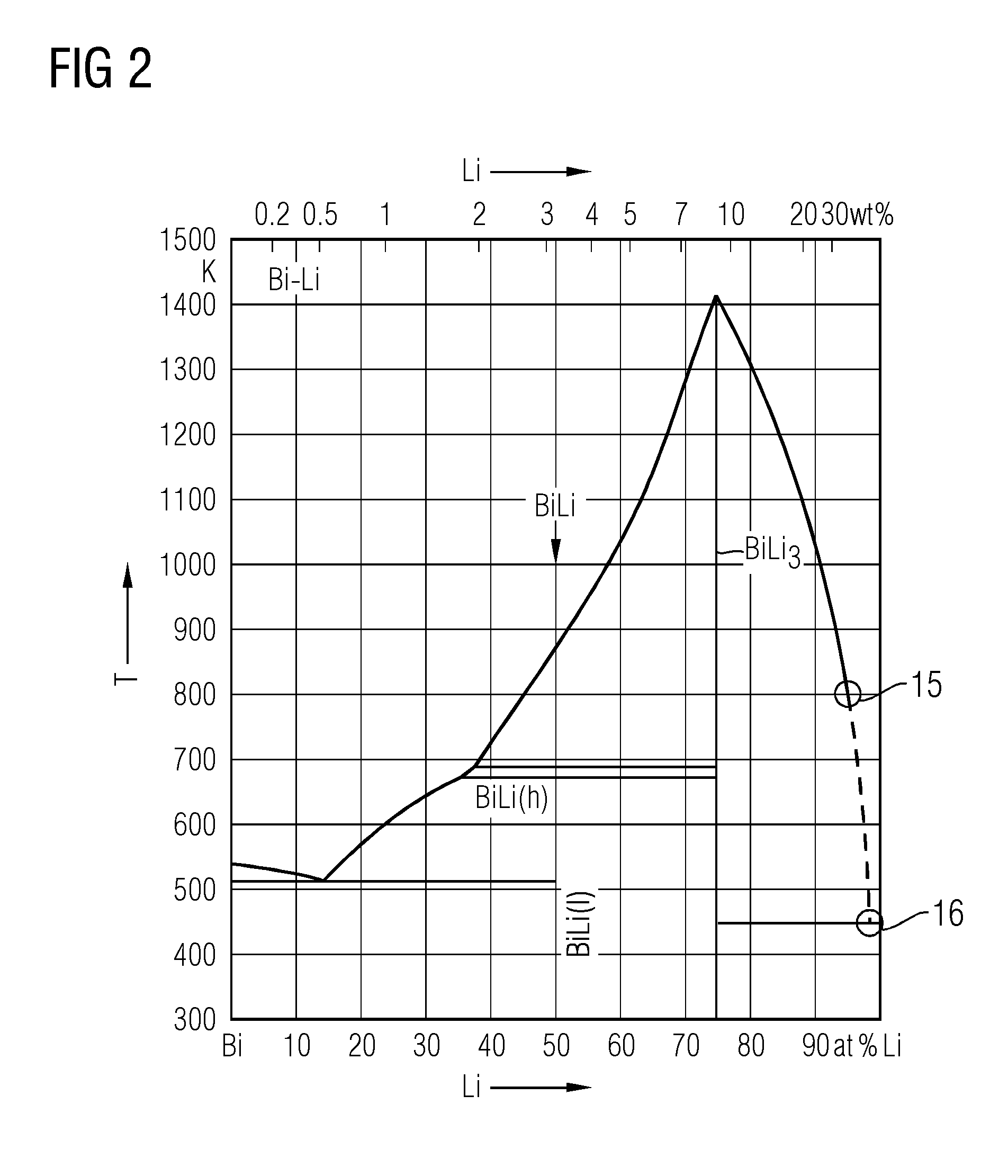Metal-jet x-ray tube
a technology of x-ray tube and metal jet, which is applied in the direction of discharge tube main electrode, x-ray tube target material, x-ray tube target and convertor, etc., can solve the problems of power density, inability to electrostatically focus the electron beam in magnetic fields of such strength, and too high power loss for given luminous intensities. achieve the effect of increasing light generation efficiency
- Summary
- Abstract
- Description
- Claims
- Application Information
AI Technical Summary
Benefits of technology
Problems solved by technology
Method used
Image
Examples
Embodiment Construction
[0019]FIG. 1 depicts a metal jet x-ray tube 1 including a vacuum chamber 2. A cathode component 3 is arranged in the vacuum chamber 2. The cathode component 3 serves to extract an electron beam 4. Moreover, a provision 5 for causing the extraction of the electron beam 4 from the cathode component 3 is provided in the vacuum chamber 2. Furthermore, provision is made in the vacuum chamber 2 for an anode component 7 formed by a liquid metal jet 6. The metal jet 6 is the target for the emitted electron beam 4 of the cathode component 3. A provision 8 serves for accelerating the electron beam 4 emitted by the cathode component 3 in the direction and with the target of the anode component 7, at least within a vacuum path 9.
[0020]The metal jet 6 is realized as a thin metal jet, to the extent that the electrons of the electron beam 4 are only partly decelerated by the metal jet 6. The cathode component 3 has a cathode knife edge 10 such that the cathode component 3 may also be referred to a...
PUM
 Login to View More
Login to View More Abstract
Description
Claims
Application Information
 Login to View More
Login to View More - R&D
- Intellectual Property
- Life Sciences
- Materials
- Tech Scout
- Unparalleled Data Quality
- Higher Quality Content
- 60% Fewer Hallucinations
Browse by: Latest US Patents, China's latest patents, Technical Efficacy Thesaurus, Application Domain, Technology Topic, Popular Technical Reports.
© 2025 PatSnap. All rights reserved.Legal|Privacy policy|Modern Slavery Act Transparency Statement|Sitemap|About US| Contact US: help@patsnap.com



